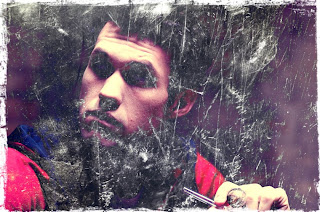My approach to the shooting of the first part of the film, the story of the Junkies, Lennon and Morris, was one based on my particular values and beliefs in regards to the filmmaking process and the application of these ideas to the aesthetical and technical elements of the film. I feel the film industry has deeply regressed into conventionality and is rooted in the tested, tried and tiresome formulas of the past that they pay far too much respect to. Therefore this film must depart from these conventions by the foremost methods with which we film it. In doing this the making of the film becomes as much a part of its identity as the story and the actors in it and the act of making of the film are as much a part of the works meaning as its specific content and style. This is evident in the 'junkies squat', the camera behaves as one with the actors performances, moving with them as they stand, look sideways, regard an object and not as part of any pre-conceived intellectualization of what the scene should look like.
Despite the use of a high-end camera, the ARRI ALEXA it is shot in a documentary style, handheld and with minimum use of added lighting. This, however is also for practical purposes, saving time spent on lights and tripod and covering scenes in their entirety. Never alienating moments for specific coverage or beats but capturing everything in a fluid, uninterrupted moment by moment of continuous action. The scene is blocked out and the action is planned immediately prior to shooting with no pre conceptions of how the scene will look until it is performed on the location, in character, by the actors. Therefore, there was no use of tracking rails which limit movement and force the Director to pre-plan a shot so pushcarts and wheelchairs were used instead.
Keeping crew to a scant minimum is also a necessity when shooting this way and I believe 5-6 key members is more than sufficient. With no continuity or planning prior to the filming, we work organically from the outside in. Watching the scene we move from wide-shots, to two-shots, to singles, to details, always playing out the scene from beginning to end. For example, if the film requires a close up of a radio and then one of a set of tools, the scene would be performed in its entirety and the camera would maneuver itself within the scene to pick up these specific moments of action. For these reasons the methods become inseparable from its aesthetic.
I strongly feel that this has an affect of bringing the audience closer to an active participation in the film.








